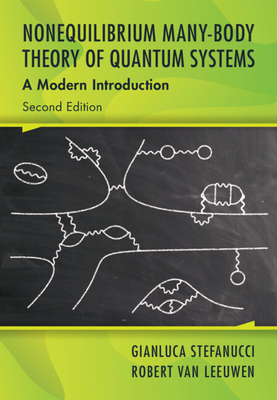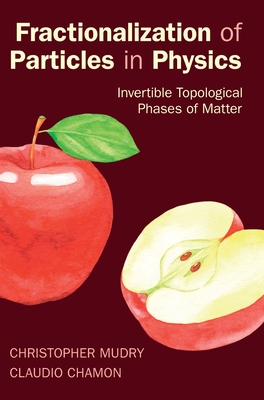图书简介
This edited book is focused on antioxidant compounds and their biosynthesis, up-regulation, mechanism of action for selective bioactivity, targeted role and the advancement of their bioactive potential during plant-microbe interaction and other stress conditions. This book also emphasizes on the role of antioxidants in recruiting beneficial microbes in plant surroundings. Antioxidants have multiple biological roles in plants especially in the signalling pathway. These compounds are secondary metabolites produced besides the primary biosynthetic pathway and are associated with growth and development. Besides they also have special role to play during oxidative stress produced via abiotic stimulants or pathogen attack. This understanding of the biosynthesis, signaling and function of antioxidant compounds in plants during stress condition is helpful in restoring plant ecosystem productivity and improve plant responses to a wide range of stress conditions. This book is a useful compilation for researchers and academicians in botany, plant physiology, plant biochemistry and stress physiology. Also the book serves as reading material for undergraduate and graduate students of environmental sciences, agricultural sciences and other plant science courses.
Chapter 1. Antioxidants in Plant-Microbe Interaction.- Chapter 2. Plant microbe symbiosis led synthesis of bioactive compounds.- Chapter 3. Plant-Rhizobacteria communications with antioxidant system.- Chapter 4. Association of Non-Enzymatic Antioxidants in Plant Holobiont.- 5. Carotenoids and flavonoids in plant stress management.- Chapter 6. PGPR-the redeemer of rice from abiotic stress.- Chapter 7. Impact of PGPR on plant health and antioxidant enzymes under water stress conditions.- Chapter 8. Rhizospheric plant-microbe interactions releasing antioxidants and phytostimulating compounds in polluted agroecosystems.- Chapter 9. Role of Antioxidant in plant and microbes based remediation of metal stress.- Chapter 10. Amelioration of drought stress through PGPR mediated regulation of Antioxidant defensive machinery.- Chapter 11. Potential of plant growth promoting microbes in disease reduction by influencing the antioxidant enzymes of medicinal and spice plants.- Chapter 12. Antioxidants in spices: a review of the antioxidant components and properties of some common african spices and their role in human nutrition and plant-microbe interactions.- Chapter 13. Impact of plant growth promoting microbes (PGPM) in plant disease management by inducing non-enzymatic antioxidant.- Chapter 14. Antioxidants as modulators of plant defense against soil-borne fungal pathogens upon microbial interaction.- Chapter 15. A Promising Approach of Managing Seed Borne Pathogens through Plant Growth Promoting Microbes.- Chapter 16. Antioxidant Potential of Plant Growth Promoting Rhizobacteria (PGPR) in Agricultural Crops Infected with Root Knot Nematodes.- Chapter 17. Disease management and the role of antioxidants in combating plant pathogens upon PGPR inoculation with special reference to legumes.- Chapter 18. Rhizobacters as remedy of stress tolerance in potato plant.- Chapter 19. Secondary metabolites, boon for plants; their role in defence mechanism and antioxidant activity of Anthocephalus cadamba.- Chapter 20. Role of PGPR in conferring drought stress tolerance in Rice.- Chapter 21. Fenugreek-rhizobium symbiosis and Flavonoids under stress condition.- Chapter 22. Datura stramonium: An overview of its antioxidant system for plant benefits.- Chapter 23. PGPR mediated regulation of antioxidants: Prospects for abiotic stress management in plants.- Chapter 24. Prospects of PGPRs mediated antioxidants and S and P metabolism in plants under drought stress.- Chapter 25. Prominence of Antioxidant Potential of Plants and its induction by interaction with microorganisms.- Chapter 26. Bio-molecular painstaking utilization and assimilation of phosphorus under indigent stage in agricultural crops.- Chapter 27. Plant Antioxidant System Regulates Communication Under Abiotic Stress For Enhanced Plant Productivity.- Chapter 28. Nematophagous fungi in antioxidant mediated defence against plant parasitic nematodes.- Chapter 29. Biopriming and Nanopriming: Green Revolution Wings to Increase Plant Yield, Growth and Development under Stress Condition and Forward Dimensions.
Trade Policy 买家须知
- 关于产品:
- ● 正版保障:本网站隶属于中国国际图书贸易集团公司,确保所有图书都是100%正版。
- ● 环保纸张:进口图书大多使用的都是环保轻型张,颜色偏黄,重量比较轻。
- ● 毛边版:即书翻页的地方,故意做成了参差不齐的样子,一般为精装版,更具收藏价值。
关于退换货:- 由于预订产品的特殊性,采购订单正式发订后,买方不得无故取消全部或部分产品的订购。
- 由于进口图书的特殊性,发生以下情况的,请直接拒收货物,由快递返回:
- ● 外包装破损/发错货/少发货/图书外观破损/图书配件不全(例如:光盘等)
并请在工作日通过电话400-008-1110联系我们。
- 签收后,如发生以下情况,请在签收后的5个工作日内联系客服办理退换货:
- ● 缺页/错页/错印/脱线
关于发货时间:- 一般情况下:
- ●【现货】 下单后48小时内由北京(库房)发出快递。
- ●【预订】【预售】下单后国外发货,到货时间预计5-8周左右,店铺默认中通快递,如需顺丰快递邮费到付。
- ● 需要开具发票的客户,发货时间可能在上述基础上再延后1-2个工作日(紧急发票需求,请联系010-68433105/3213);
- ● 如遇其他特殊原因,对发货时间有影响的,我们会第一时间在网站公告,敬请留意。
关于到货时间:- 由于进口图书入境入库后,都是委托第三方快递发货,所以我们只能保证在规定时间内发出,但无法为您保证确切的到货时间。
- ● 主要城市一般2-4天
- ● 偏远地区一般4-7天
关于接听咨询电话的时间:- 010-68433105/3213正常接听咨询电话的时间为:周一至周五上午8:30~下午5:00,周六、日及法定节假日休息,将无法接听来电,敬请谅解。
- 其它时间您也可以通过邮件联系我们:customer@readgo.cn,工作日会优先处理。
关于快递:- ● 已付款订单:主要由中通、宅急送负责派送,订单进度查询请拨打010-68433105/3213。
本书暂无推荐
本书暂无推荐
















